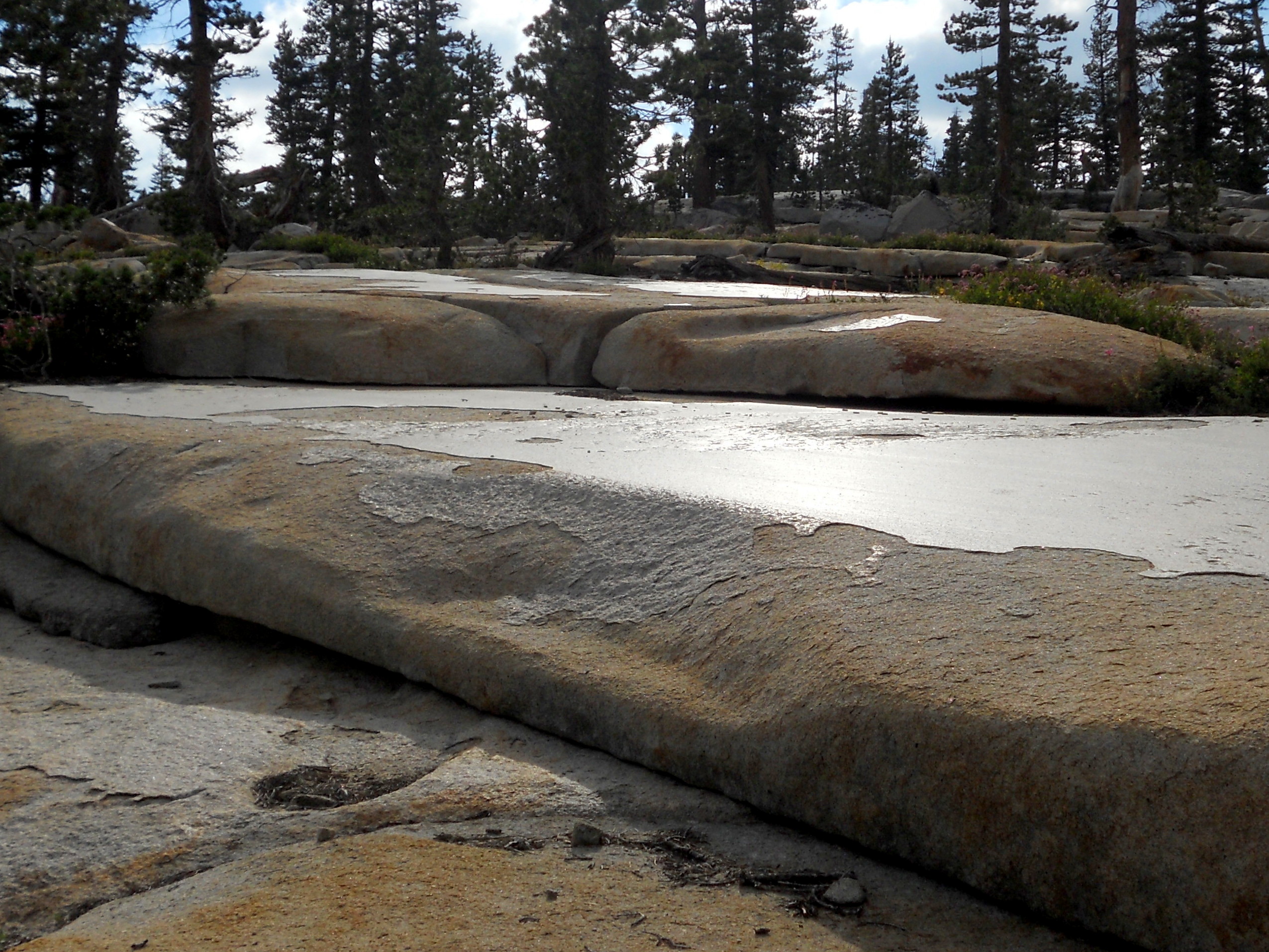Glacial polish on:
[Wikipedia]
[Google]
[Amazon]
Glacial polish is a characteristic of rock surfaces where glaciers have passed over bedrock, typically 
Glaciology {{glaciology-stub
granite
Granite () is a coarse-grained ( phaneritic) intrusive igneous rock composed mostly of quartz, alkali feldspar, and plagioclase. It forms from magma with a high content of silica and alkali metal oxides that slowly cools and solidifies under ...
or other hard igneous
Igneous rock (derived from the Latin word ''ignis'' meaning fire), or magmatic rock, is one of the three main rock types, the others being sedimentary and metamorphic. Igneous rock is formed through the cooling and solidification of magma or ...
or metamorphic rock
Metamorphic rocks arise from the transformation of existing rock to new types of rock in a process called metamorphism. The original rock ( protolith) is subjected to temperatures greater than and, often, elevated pressure of or more, caus ...
. Moving ice will carry pebbles and sand grains removed from upper levels which in turn grind a smooth or grooved surface upon the underlying rock.
The presence of such polish indicates that the glaciation was relatively recent (in geologic time scale
The geologic time scale, or geological time scale, (GTS) is a representation of time based on the rock record of Earth. It is a system of chronological dating that uses chronostratigraphy (the process of relating strata to time) and geochr ...
) or was subsequently protected by deposition, as such polish will be subsequently lost due to weathering processes (such as exfoliation).

See also
*Glacial striation
Glacial striations or striae are scratches or gouges cut into bedrock by glacial abrasion. These scratches and gouges were first recognized as the result of a moving glacier in the late 18th century when Swiss alpinists first associated them w ...
References
Glaciology {{glaciology-stub